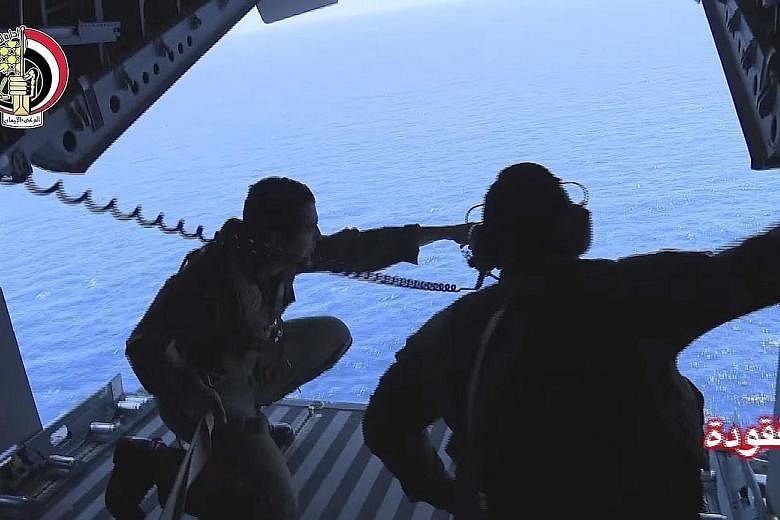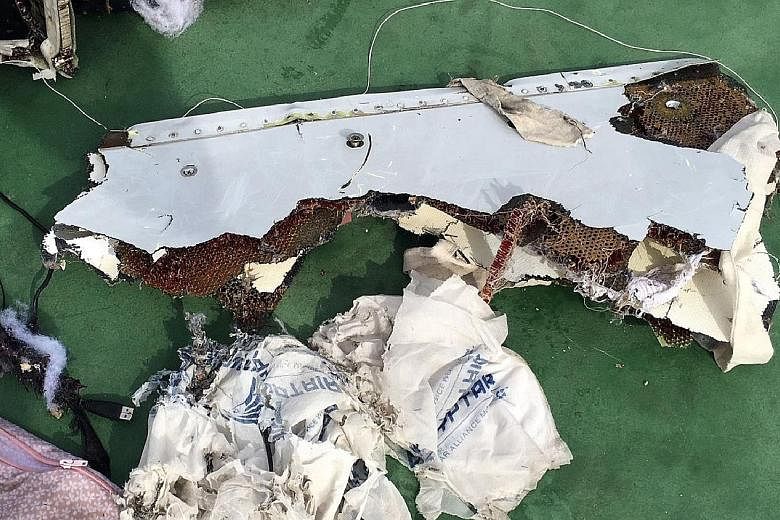CAIRO • The flight track of EgyptAir Flight MS804 indicated that it crashed halfway between Crete and Egypt, which could mean it landed on what scientists refer to as the Mediterranean Ridge.
The ridge has been pushed upwards by the African plate of the earth's crust sliding under the Aegean Sea, deforming and crumbling the seafloor, said Mr William Ryan, a scientist at the Lamont- Doherty Earth Observatory at Columbia University who has studied the Mediterranean seafloor.
The water there is about 2.4km deep, and picking out wreckage at the bottom from among bumps, which are perhaps 15m to 30m in size, could be complex. If the plane crashed farther to the south, the wreckage would lie on a smoother plain at a depth between 2.3km and 2.7km, he said.
In that case, the search would go faster - and the much-desired answer to what caused the crash could come quicker.
The plane was carrying 56 passengers, including a child and two infants, and 10 crew, when it crashed on Thursday. They included 30 Egyptian and 15 French nationals, along with citizens of 10 other countries.
Egypt's navy, with help from French and other vessels, has been searching an area north of Alexandria, just south of where the signal from the plane was lost early on Thursday.
The Egyptian navy found human remains, wreckage and the personal belongings of passengers floating in the Mediterranean, about 290km north of Alexandria, on Friday. An army spokesman yesterday published pictures of the recovered items - which included blue debris with EgyptAir markings, seat fabric with designs in the airline's colours, and a yellow life jacket - on its official Facebook page.
Analysis of the debris is likely to be key to determining what happened to the flight.
EgyptAir Holding Company chairman Safwat Moslem said that the priority was finding passengers' remains and the flight recorders of the ill-fated plane, which will stop emitting a signal in a month when the batteries run out.
"The families want the bodies. That is what concerns us. The army is working on this. This is what we are focusing on," he said.
A French patrol boat carrying equipment capable of tracing the plane's black boxes is expected to reach the scene by today or tomorrow.
NEW YORK TIMES, REUTERS, AGENCE FRANCE-PRESSE


